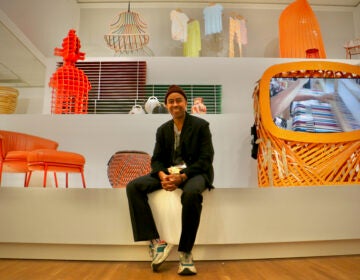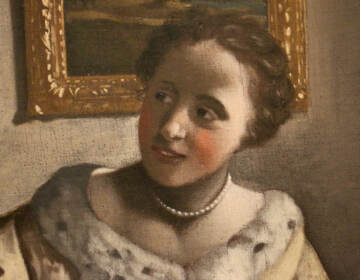Museum encourages Philly students to ‘befriend’ art with donation of reproductions
The Philadelphia Museum of Art has donated 24 high-quality art reproductions to city schools, part of 74 leftovers from its Inside Out summer outreach program.
Listen 2:06-
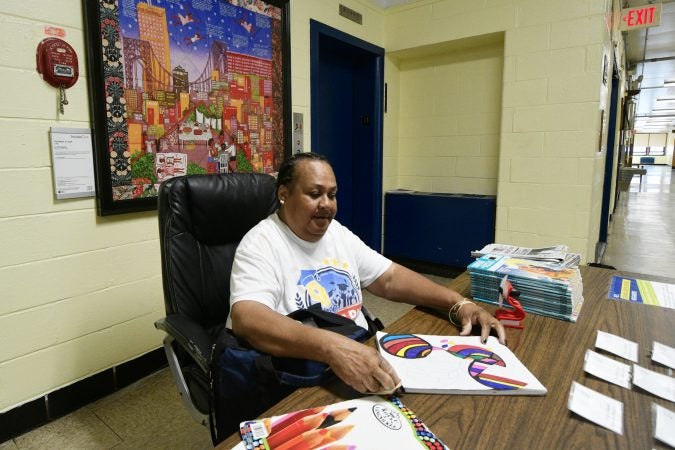
Ms. Robin Griffin shows her own work as she sits at the front desk, surrounded by replicas of works of art from the collection of the Philadelphia Museum of Art, ahead of an announcement of the Inside Out art education program at Edward Gideon Elementary School, on Tuesday June 12, 2018. (Bastiaan Slabbers for WHYY)
-
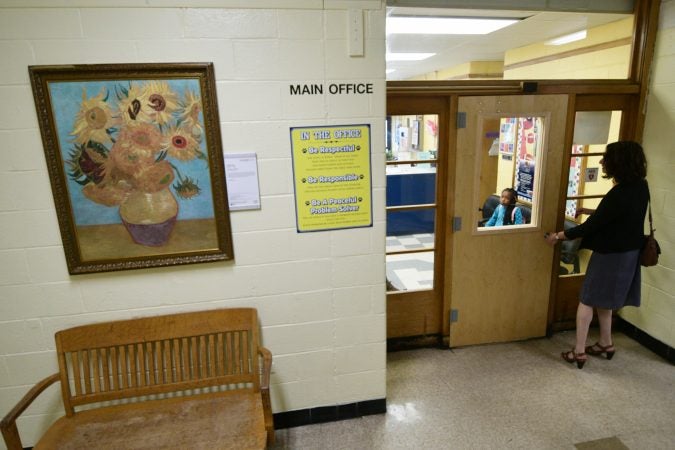
A replica of the Sunflowers, by Vincent van Gogh (1853-1890, the Netherlands) hangs in the hallway of Edward Gideon Elementary School, next to the Main Office. (Bastiaan Slabbers for WHYY)
-

Fish Magic, by Paul Klee (1879-1940, Switzerland) is one of six replicas at Edward Gideon Elementary School, part of the Inside Out program that aims to brings art closer to children. (Bastiaan Slabbers for WHYY)
-

Dr. William Hite, superintendent for the School District of Philadelphia, speaks at the announcement of the Inside Out art program, Edward Gideon Elementary School, on Tuesday, June 12, 2018. (Bastiaan Slabbers for WHYY)
-

Shauneille Taylor, Principal at Edward Gideon Elementary School and Timothy Rub, CEO of Philadelphia Museum of Art. (Bastiaan Slabbers for WHYY)
-

Timothy Rub, CEO of Philadelphia Museum of Art speaks at the announcement of the Inside Out art program, Edward Gideon Elementary School, on Tuesday June 12, 2018. (Bastiaan Slabbers for WHYY)
-

Shauneille Taylor, Principal speaks at the announcement of the Inside Out art program, Edward Gideon Elementary School, on Tuesday June 12, 2018. (Bastiaan Slabbers for WHYY)
Tuesday was the last day of school for students at Edward Gideon Elementary in Philadelphia’s Strawberry Mansion neighborhood, so the children were understandably rowdy when they were corralled into the auditorium to hear Superintendent William Hite and Philadelphia Museum of Art CEO Timothy Rub announce a gift of art to public schools.
Just the day before, the Gideon students received six high-quality reproductions of work by artists like Van Gogh, Paul Klee, and the local abstract painter Moe Brooker placed right at the entrance to the school. It’s part of a districtwide donation of art, 24 works distributed to four schools: Gideon, Southwark, Cramp, and George Washington High.
The works are leftovers from the museum’s Inside Out program, a three-year initiative to bring 74 masterworks in the museum’s collection to outdoor locations throughout the region. Working with 60 different neighborhoods and municipalities, work was installed every summer from 2015 through 2017 in places like Brewerytown, Glenside, Lansdowne, Phoenixville, and Media in Pennsylvania, and Haddonfield, New Jersey.
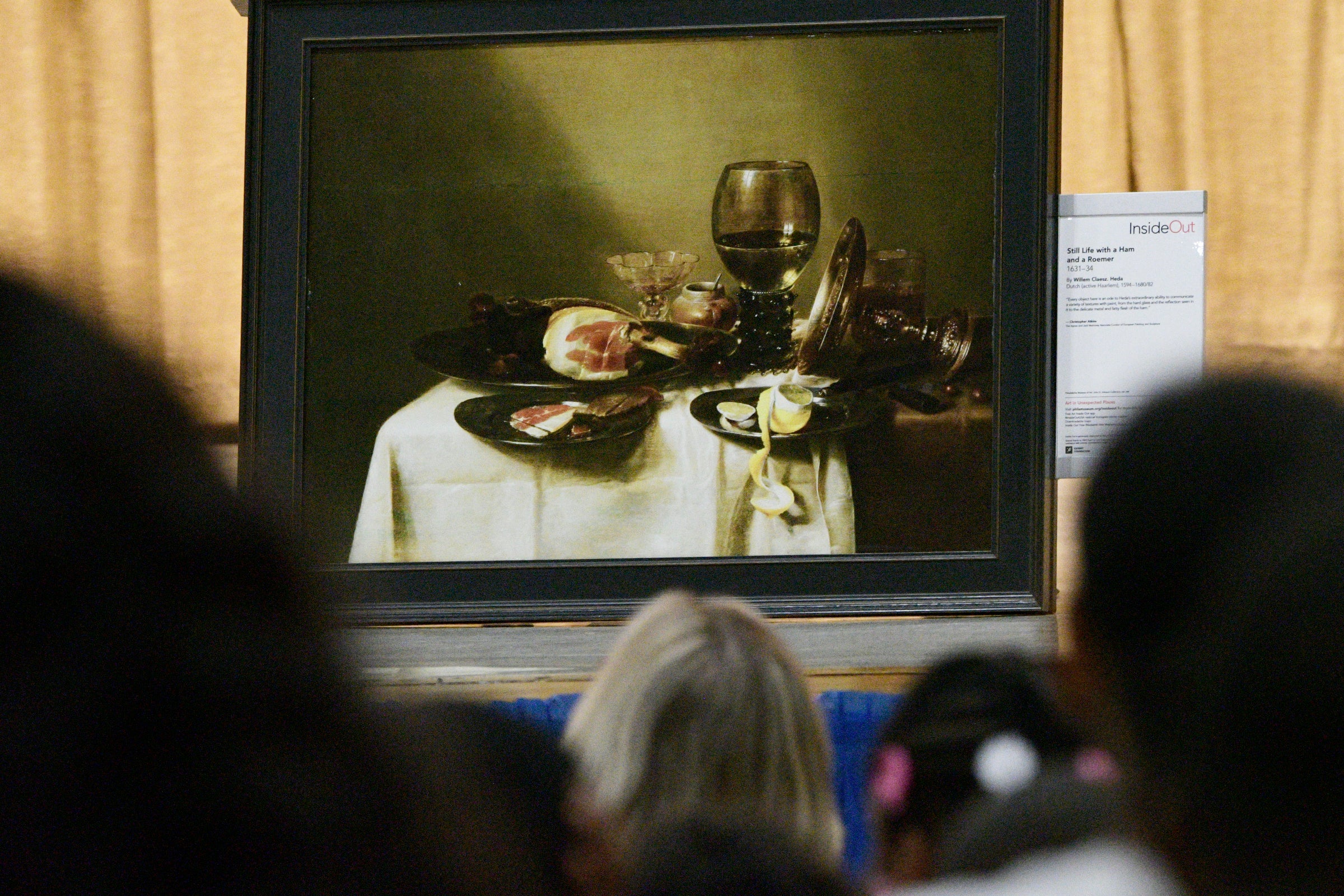
“It was a reminder to people in Philadelphia and surrounding communities that the museum is there for them. They loved that we came into their communities and partnered with them,” said Rub. “It was a great reminder for us that we have to tend our own garden.”
The end of the Inside Out program — funded by the Knight Foundation, which also funded similar programs in other cities — left the museum with several dozen high-quality, custom-framed prints.
Rather than pile them in a closet, likely to appear at a fundraising auction some time in the future, the museum decided to permanently donate them to the school district. In the halls of Gideon school, where there had been a collage of student photographs and inspirational messaging, there hangs a Brooker abstract, a reproduction of a narrative quilt by Faith Ringgold depicting her short story “Tar Beach,” and the statuesque “Moorish Chief” by Eduard Charlemont.
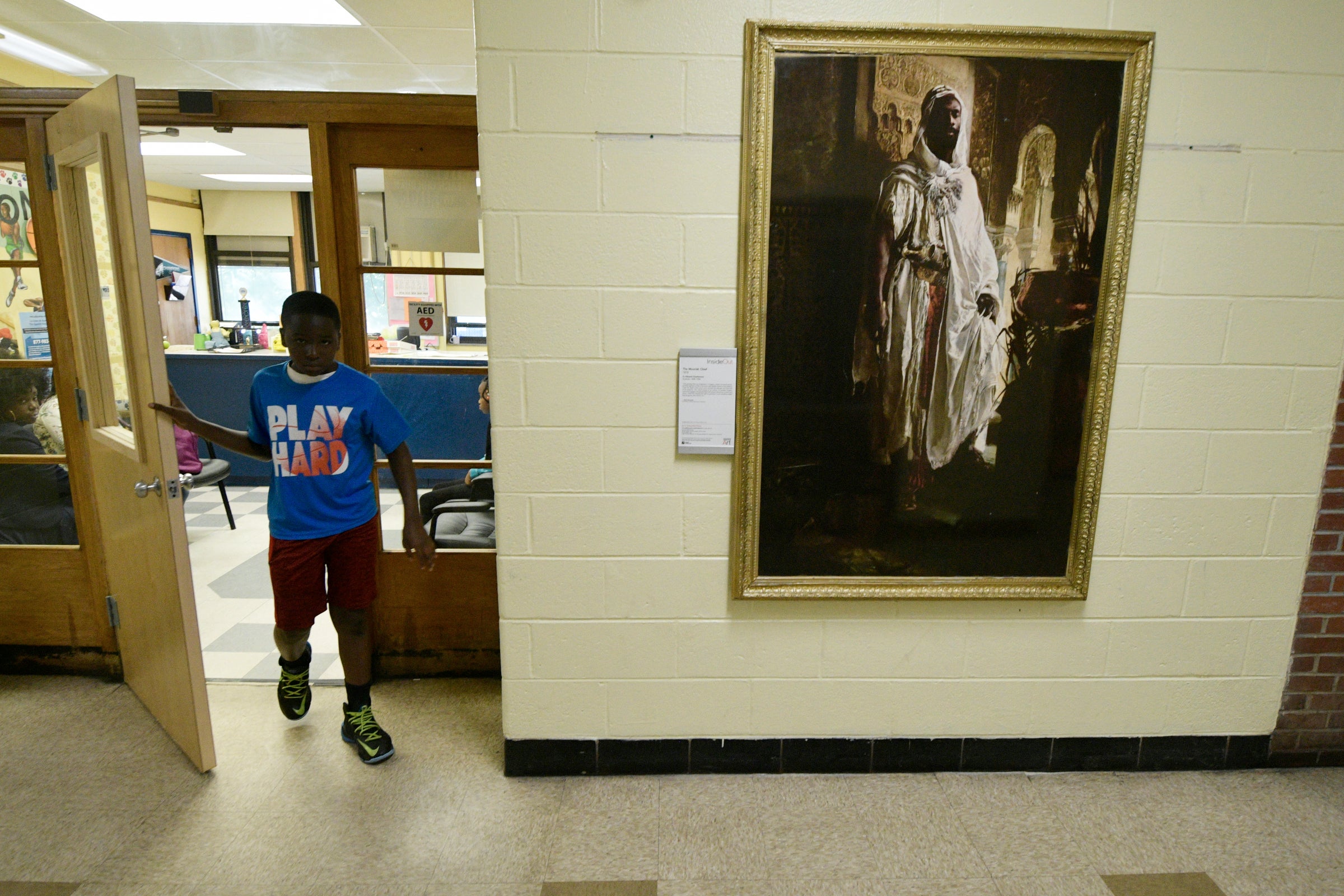
The prints are several grades better than the poster prints you can buy in the museum gift shop. The images were digitally scanned and printed to actual size with faithful color. They were glazed to be able to withstand both the outdoor elements and, in the case of a school hallway, the fingers of children. They are not behind glass.
“They are framed and treated essentially like we would treat any work of art in the museum,” said Rub.
The principal of Gideon, Shauneille Taylor, said as soon as the prints were hung, they attracted attention.
“Before the day ended, the students walking the hallway were stopping and gazing, especially the one in the hallway about fish,” she said, referring to “Fish Magic” by Paul Klee.
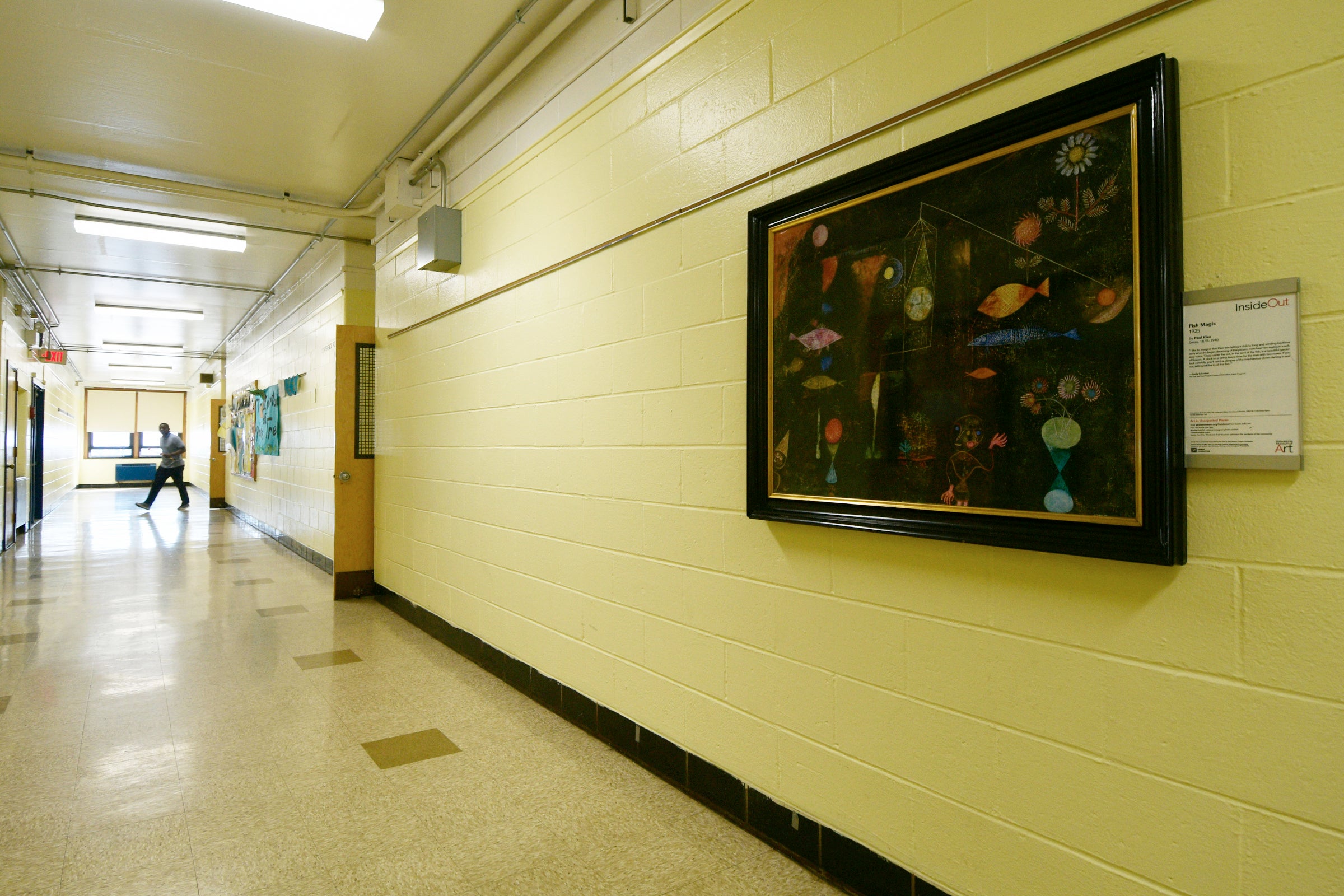
“Fish Magic” is notable for its subtlety. Klee glued a square of muslin onto the canvas before applying color, to suggest a hidden space under the paint surface. The effect disappears in printed posters. In these high-quality reproductions, the suggestion of a secret portal is more apparent.
The only way to fully appreciate what Klee is doing is to go to the museum and stand in front of the painting itself.
“Just having these works of art here, to get to know them, to look at them every day — I think of it as becoming friends with a work of art,” said Barbara Bassett, the museum’s curator of education for school and teacher programs. “Getting to know the piece really well encourages kids to want to see the real thing.”
At the announcement of the donation, Hite reiterated his support of art and music in public schools as tools to make better, more accomplished students. Right now the system is lagging behind Hite’s goal of providing some kind of art and music instruction in every school.
The schools got first dibs on the Inside Out remainders. The rest of the works will be given to the participating municipalities.
WHYY is your source for fact-based, in-depth journalism and information. As a nonprofit organization, we rely on financial support from readers like you. Please give today.



